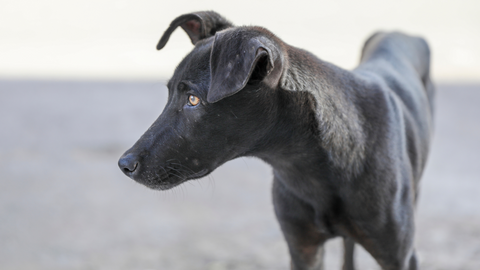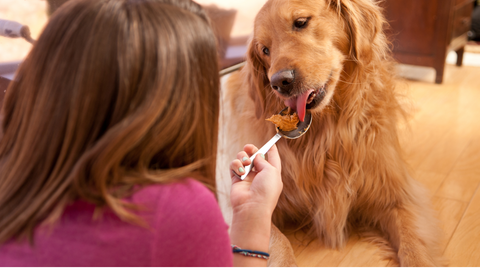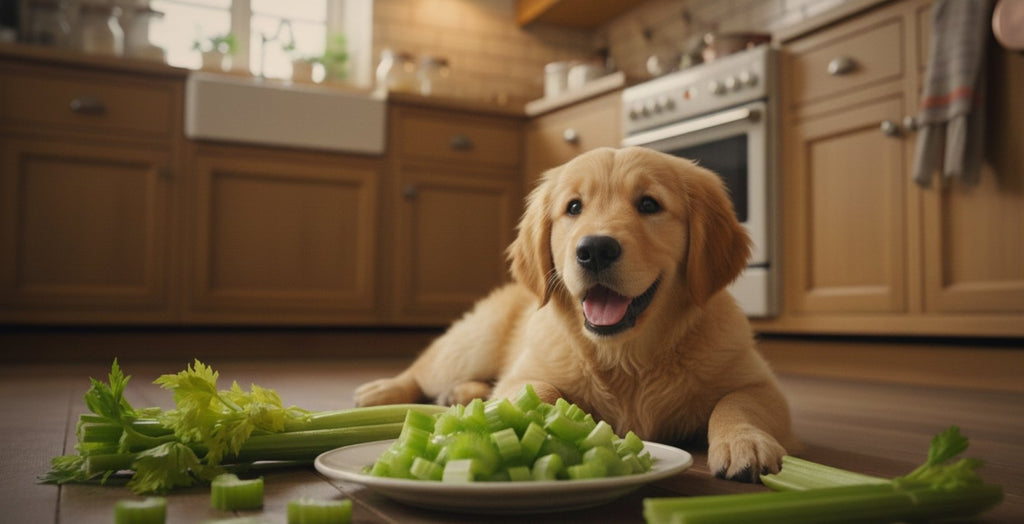How to Fatten Up a Dog: 7 Easy Tips to Get Your Dog Eating ASAP

If you have noticed that your dog is looking thinner, and you haven't made any lifestyle or diet changes, its best to schedule an appointment with your vet to see if your doggo has any health issues that are causing the weight loss.
Once you’ve determined that your dog is healthy, here is how to put weight on a dog!
Reason Why Your Dog Isn’t Gaining Weight
If your dog is suffering from diarrhoea, lack of appetite or vomiting, or if they are suddenly acting lethargic or low on energy, it could be a health problem that needs to be addressed soon.
If your dog just gave birth and is still nursing, losing some weight is common, and the same is true for older dogs. These should take care of themselves unless it persists and you can start seeing their ribs.
There are many health-related causes of weight loss. If your dog has:
- Cancer
- Dental problems
- Diabetes mellitus
- Food allergies
- Gastro-intestinal disorders
- Kidney disease
- Liver disease
- Megaesophagus
- Parasites
You could see a significant loss of weight. You should get your dog an appointment with your vet as soon as possible.
Stress
Stress can also be a factor causing your dog to drop weight. A change in the living situation can affect your furry baby, as can a major change in their daily schedule. With any luck, your doggo will adapt and start eating, ending the weight loss.
Food Competition
If you have other dogs in the house, especially if they are food aggressive, the problem might not be with the dog that is losing weight. Watch your doggo when they are eating and if you see their canine companions pushing them away from their food, you might need to feed them separately.
How to Determine Why Your Dog is Thin
To get to the bottom of your dog’s weight loss, try:
- Pay attention to how much your dog is eating and going to the bathroom.
- Assess your dog’s overall health.
- Get a checkup from the vet.
- Check recommended portions on your dog food’s packaging and supplement if needed.
- Consider switching to a higher-calorie, nutrient-rich, high-protein dry dog food or premium raw dog diet food to boost caloric intake while preserving digestive health. [1]
How to Fatten a Dog Up

“There are no health concerns, but my dog still looks thin! What can I give my dog to gain weight?” If your dog is healthy, happy, and the vet cannot find a medical reason for their weight loss (or lack of weight gain), there are some things you can do!
Try providing them with:
- A brand of dog food that they like better
- At least two meals a day
- A 3rd or even 4th small serving of their food
- Food that is high in fat and protein
- Cooked sweet potato and pumpkin
- High-fat treats, especially before bedtime
- Peanut butter added to their food
Complete nutrition designed to safely increase your pup’s weight
Should I Cut Back on My Dog’s Exercise?
No. Even though you are trying to put a little more fat on their frame, make sure that they still get plenty of regular exercise. It will help keep their system healthy and working properly.
Dogs that get little exercise might be underweight. If that is the case, you will want to build up their muscles. Feed them a healthy diet with a complete complement of amino acids to help build up muscle mass. Make sure that they exercise daily. Twice a day is ideal! Feed them food that is high in protein as well as fat. If they have joint pain, give them supplements that can help to reduce it. And remember, when it’s hot outside, give your dog plenty of water and time to recover between exercise sessions [2].
Should I Fatten Up a Dog with Human Food?
Not necessarily. As your vet will likely recommend, you should stick to your dog’s primary AAFCO-compliant premium dog food. Adding a few ‘human foods’, such as peanut butter or pumpkin, to their kibble or raw food can help them gain weight. But your dog’s primary diet should always be their dog food. Otherwise, you risk accidentally creating a nutritional deficiency. (Read more below).
A Vet-Prescribed Diet Can Help Your Dog Put on Weight
Once your vet has given your dog a clean bill of health, your vet can help you pick out food to fatten up a dog. Generally, they will suggest foods that taste good, are easy to digest, and come with plenty of calories. There are a number of dog foods on the market to choose from. Some are blended specifically to help when a dog won’t gain weight, others are geared toward giving dogs the right food for their age, while others are made specifically for work dogs that burn a lot of extra calories. You and your vet can help find the best food to fatten up your dog. [3]
Foods to Fatten Up Your Dog
What can you give your dog to gain weight? Check the label on your current dog food. You will want to make sure that they are getting plenty of protein and fat. Compare the label with those of other brands. Protein will help them to build muscle and fat will give them plenty of calories to burn throughout the day.
Look for treats, as well, that are high in protein and fat. Things like dried chicken, salmon, beef, kangaroo, lamb, etc. Make sure that protein is the first ingredient listed. Like everything that you feed your doggo–read the label carefully, so you can be sure you’re giving them the best and healthiest snacks.
Fatten Up Your Dog with Human Food
There are some healthy human foods that you can give to your furry friend. Try adding some of these to their regular food for a caloric boost:
- Cheese
- Chicken Liver
- Cottage Cheese
- Fish oil
- Peanut Butter
- Pumpkin
- Raw meats
- Sweet potato
- Tuna
You can either add these to their existing food or give them as a nutritious snack between meals. All of these are appealing to dogs, so even the fussiest doggo should go for them.
How to Fatten My Dog Up? Feed Them Well, Stay Active, & Check with Your Vet

Your dog is a big part of your life, and you want to make sure that you are giving them the best life that you can. Few things can worry paw-rents more than their forever friend losing weight and acting listless throughout the day. Unless the cause is obvious, consult with your veterinarian as soon as possible to rule out any life-threatening health issues.
If your doggo is healthy, then you will need to make some changes to make them happy. Make sure you are giving them a brand of dog food that they like. Feed them healthy high-calorie treats between meals. Also, make sure things are as calm as possible at meal time, and try to keep their schedule as stable as you can. Give them as much love and affection as they give you, and with any luck, they will start to put the weight back on so you can share a long and healthy life together.
References:




